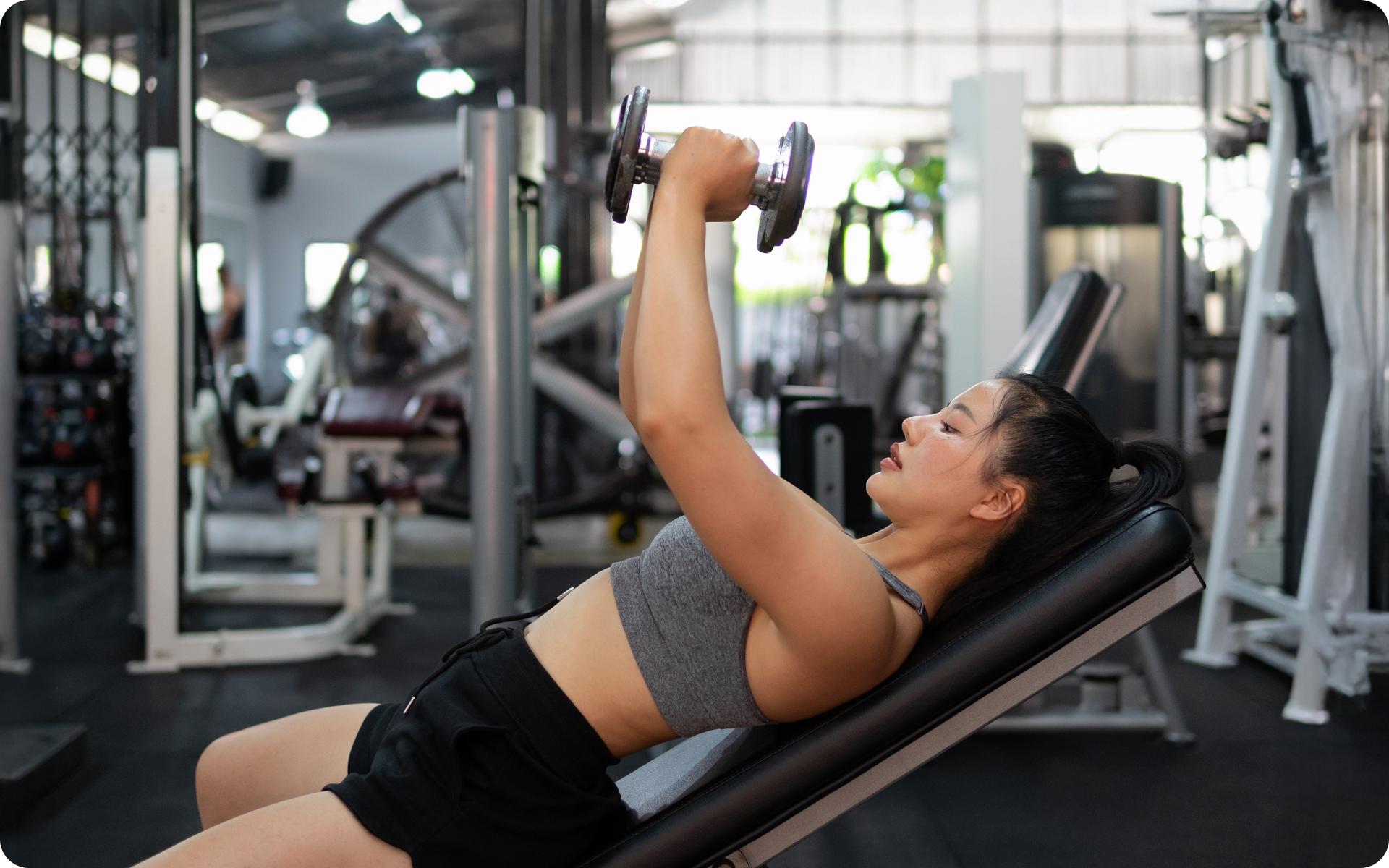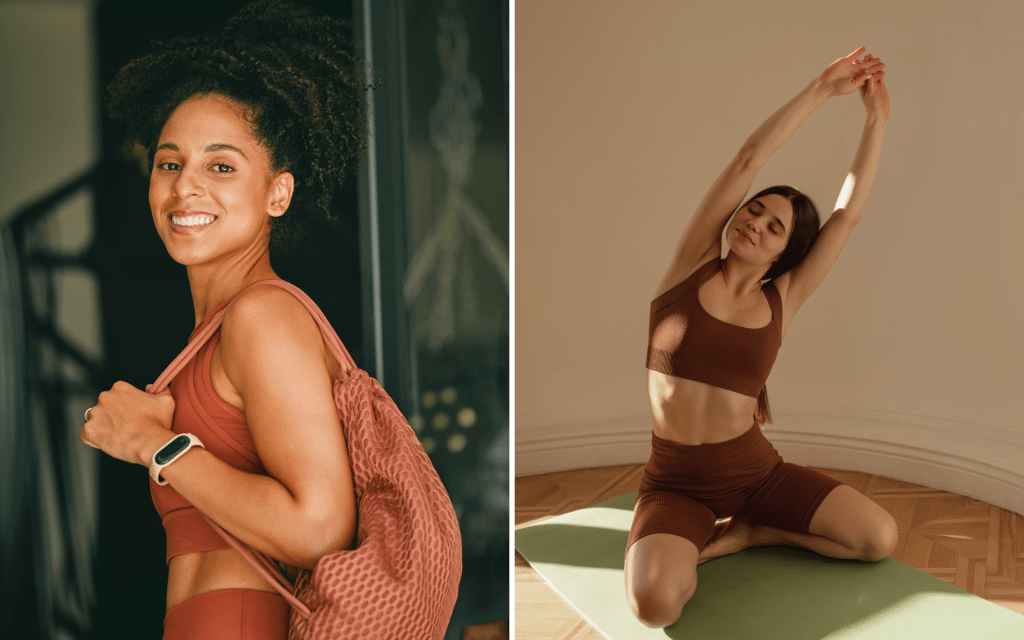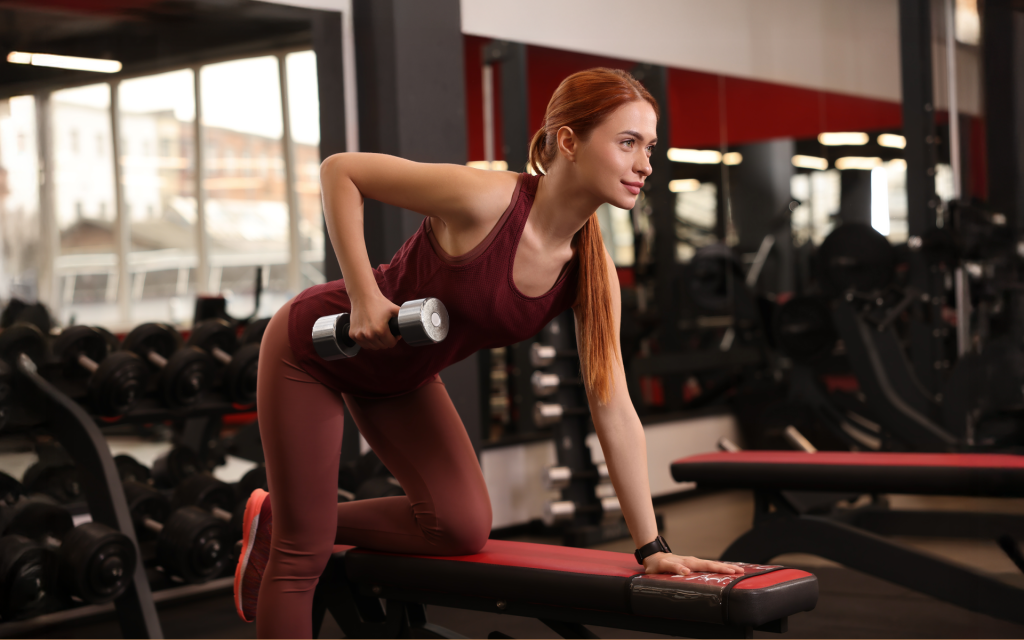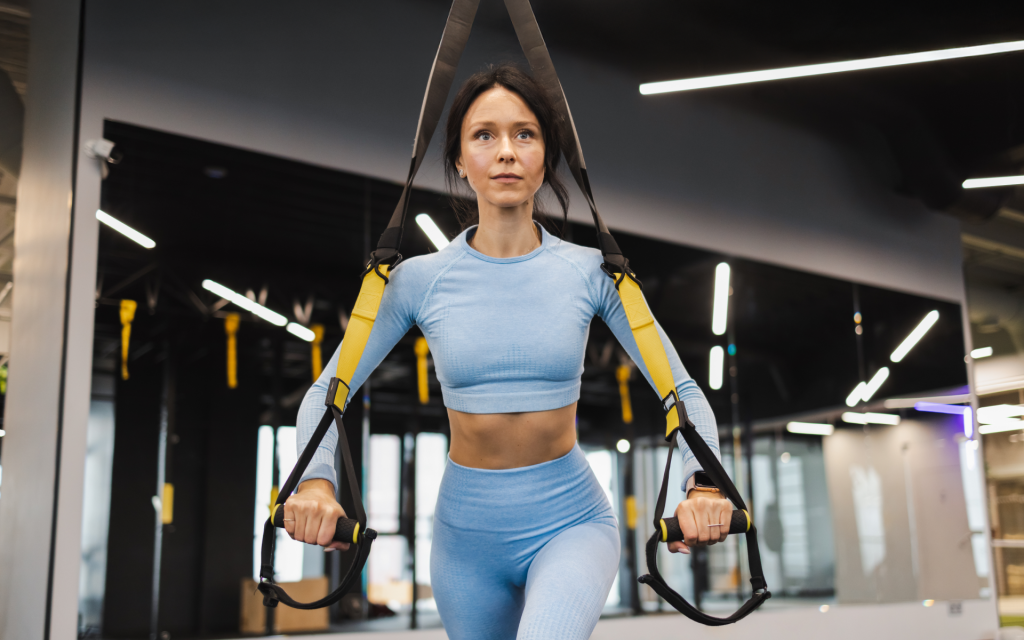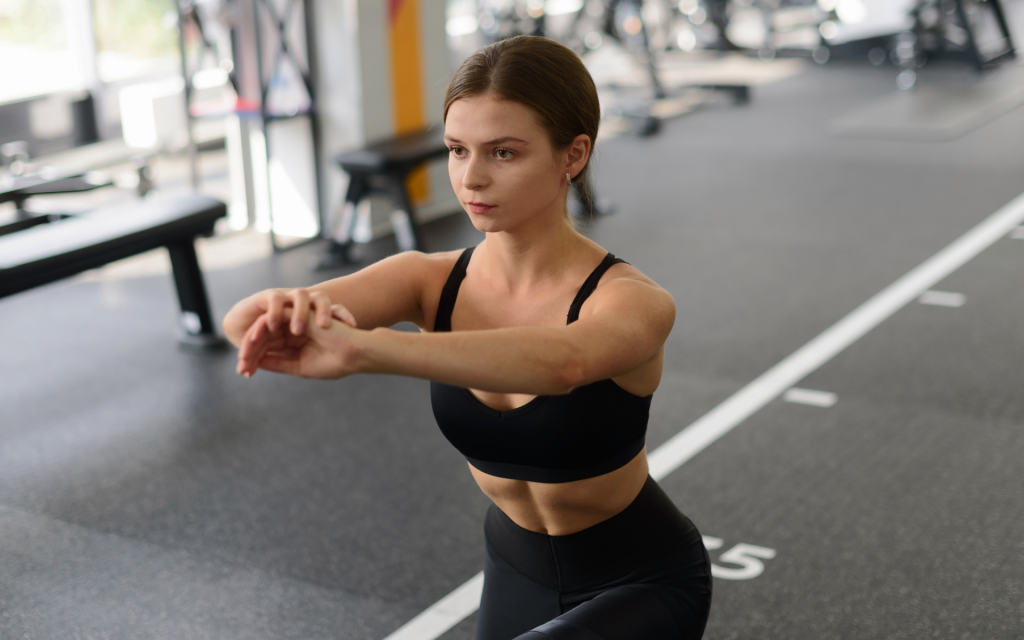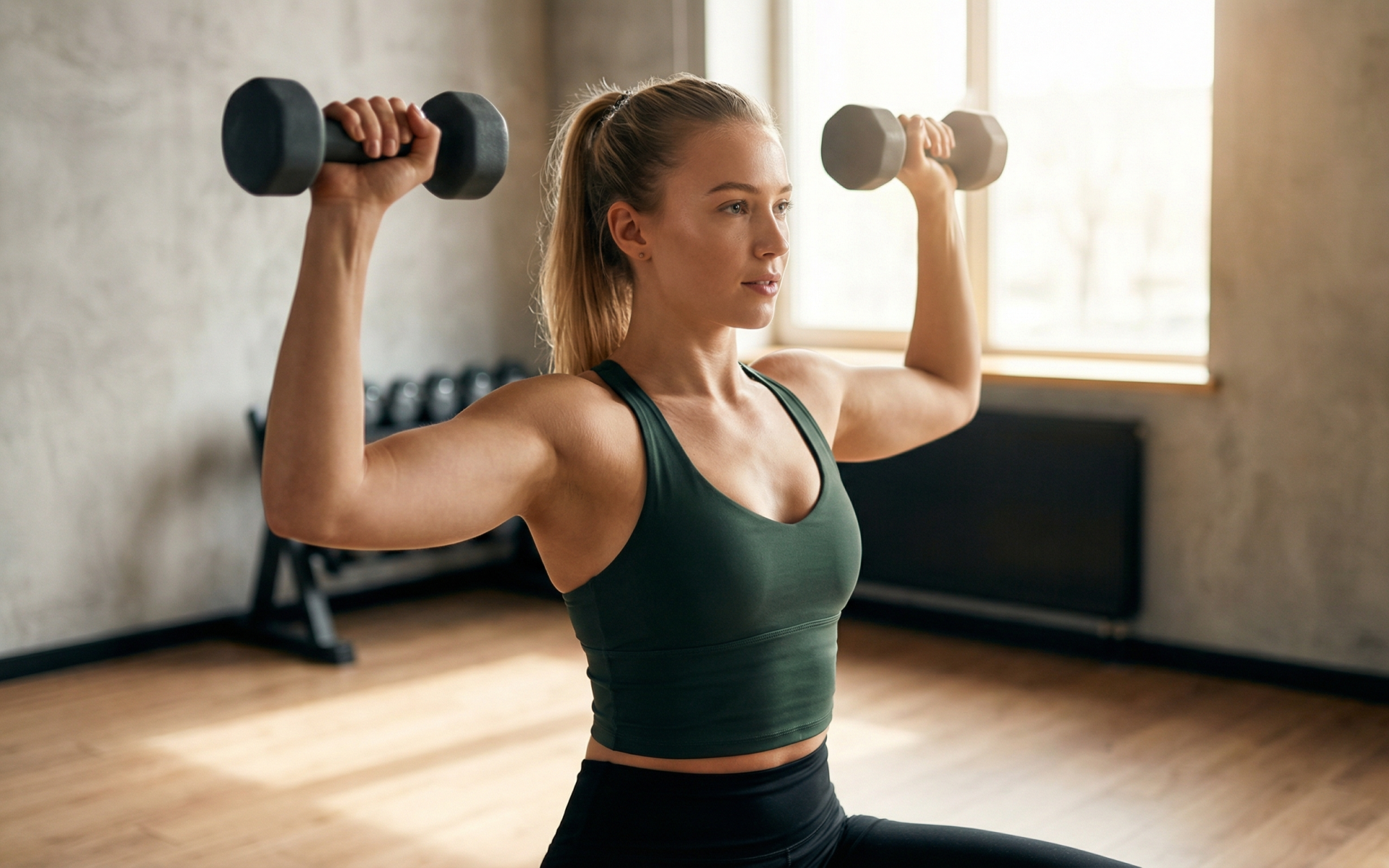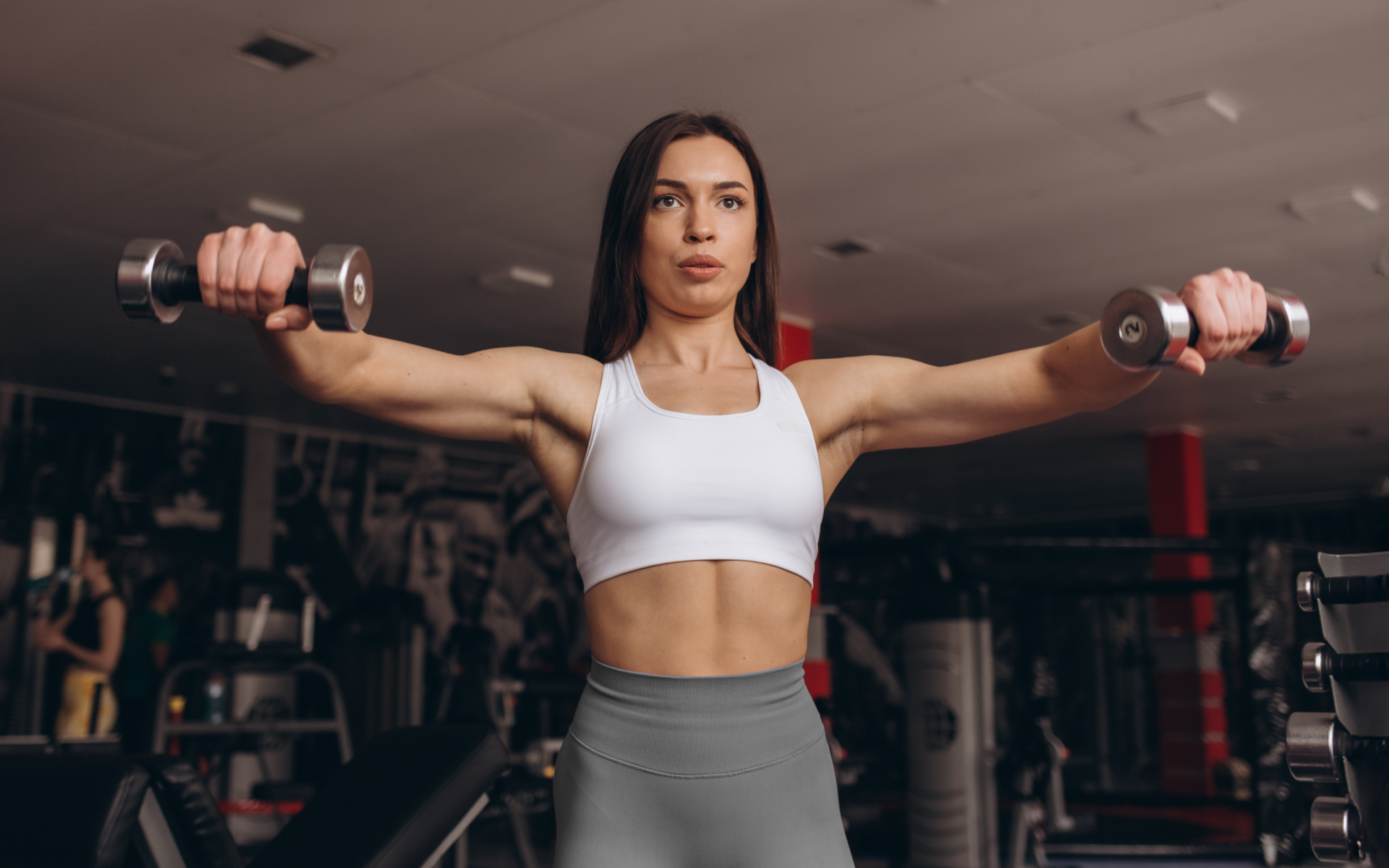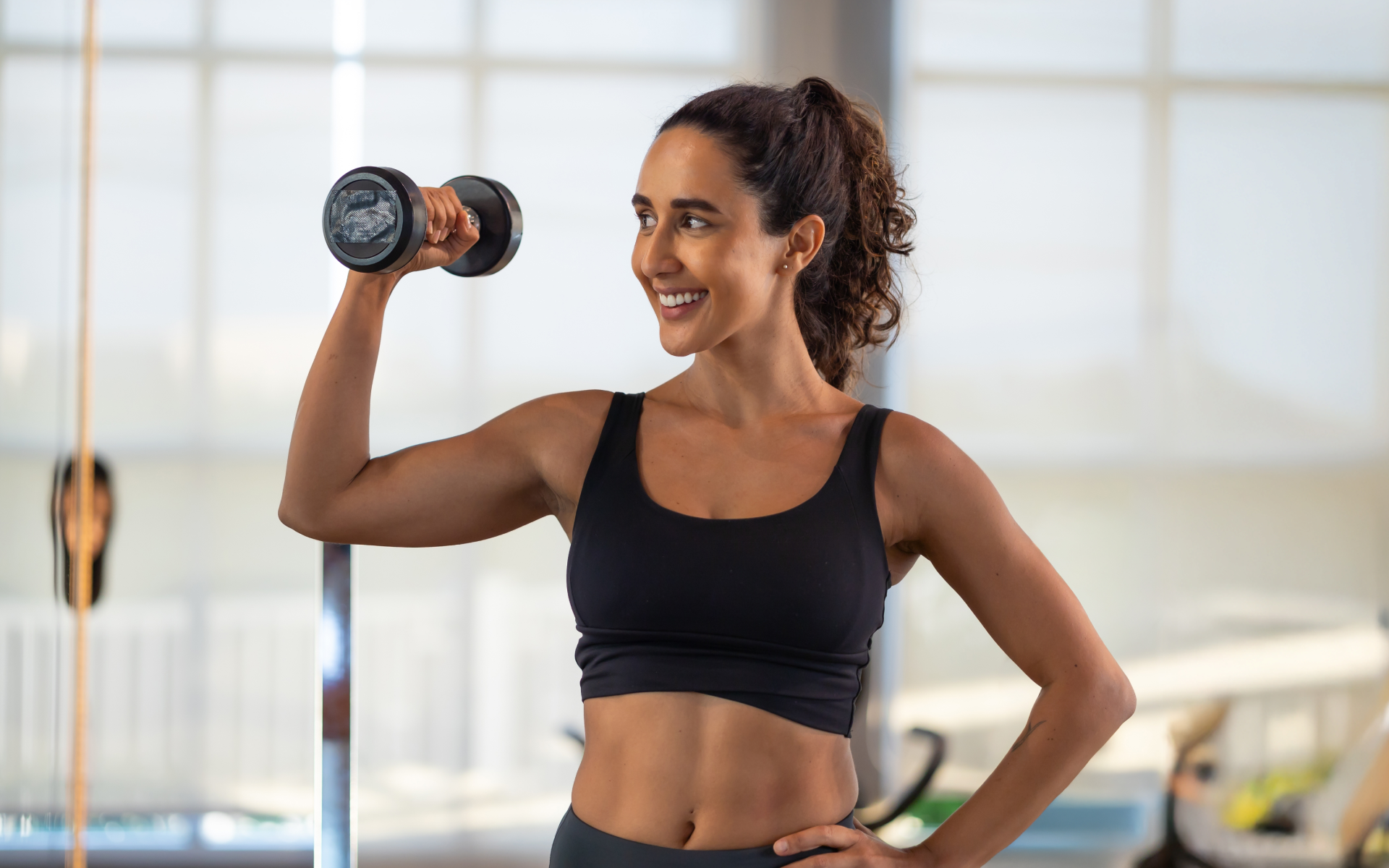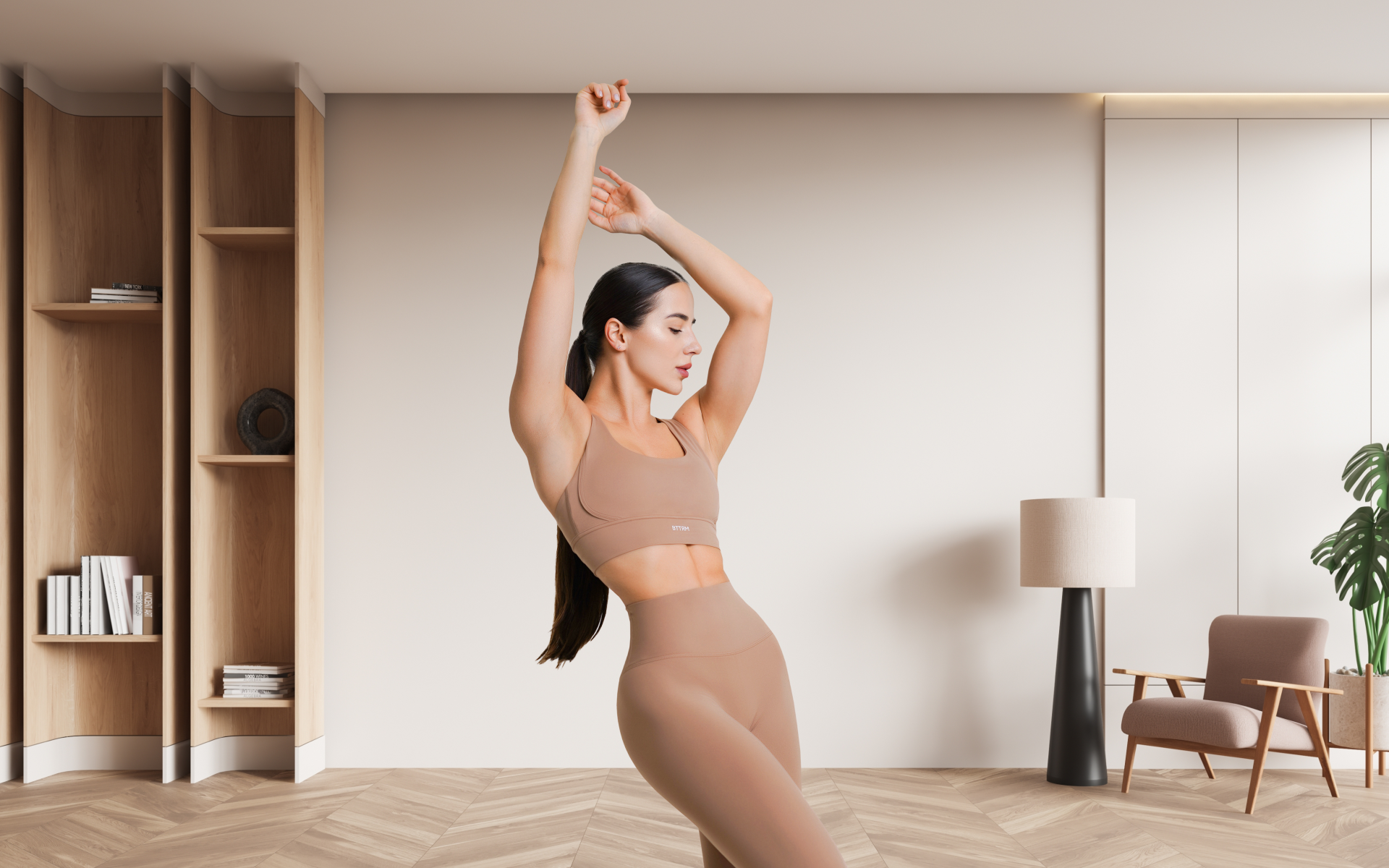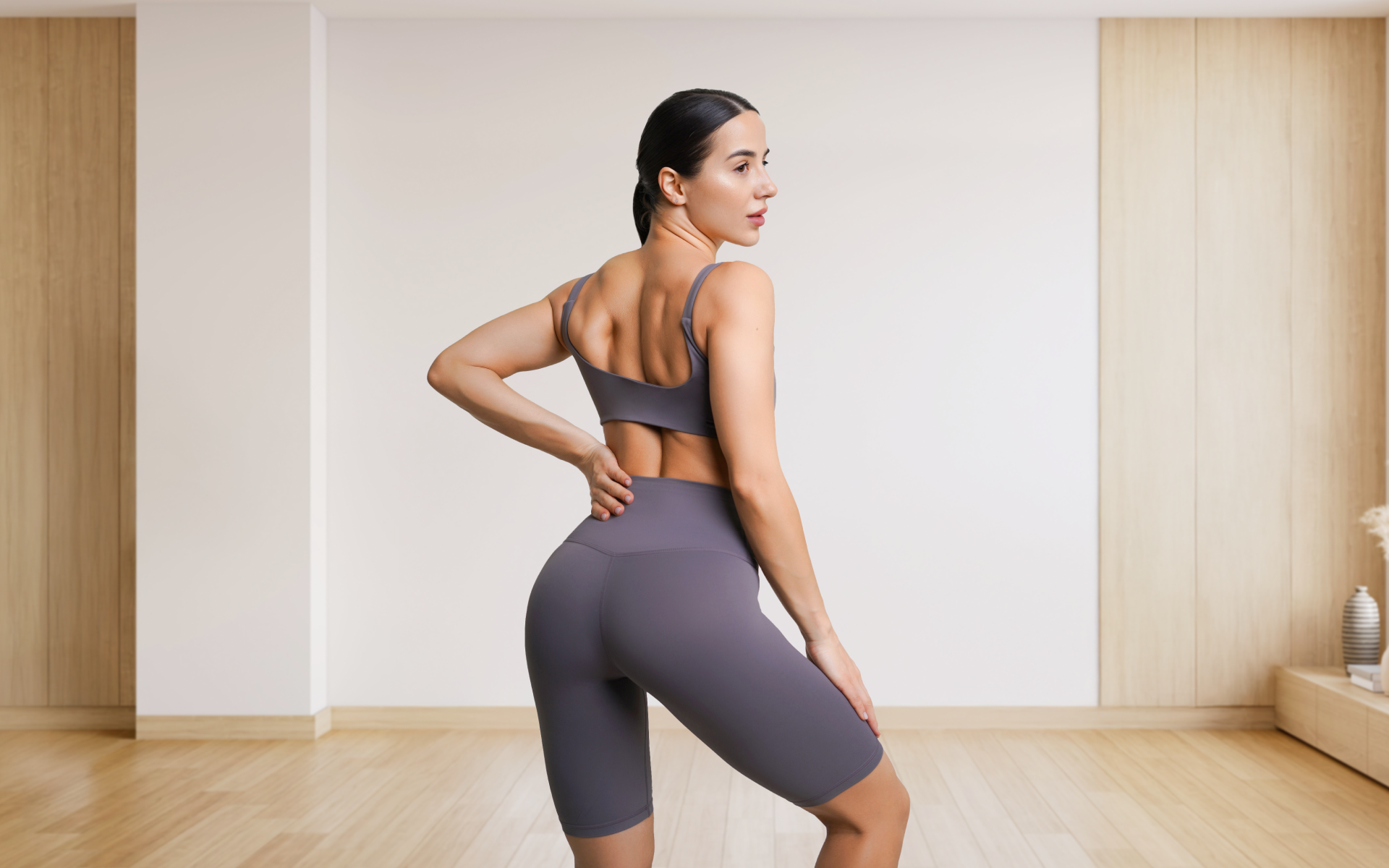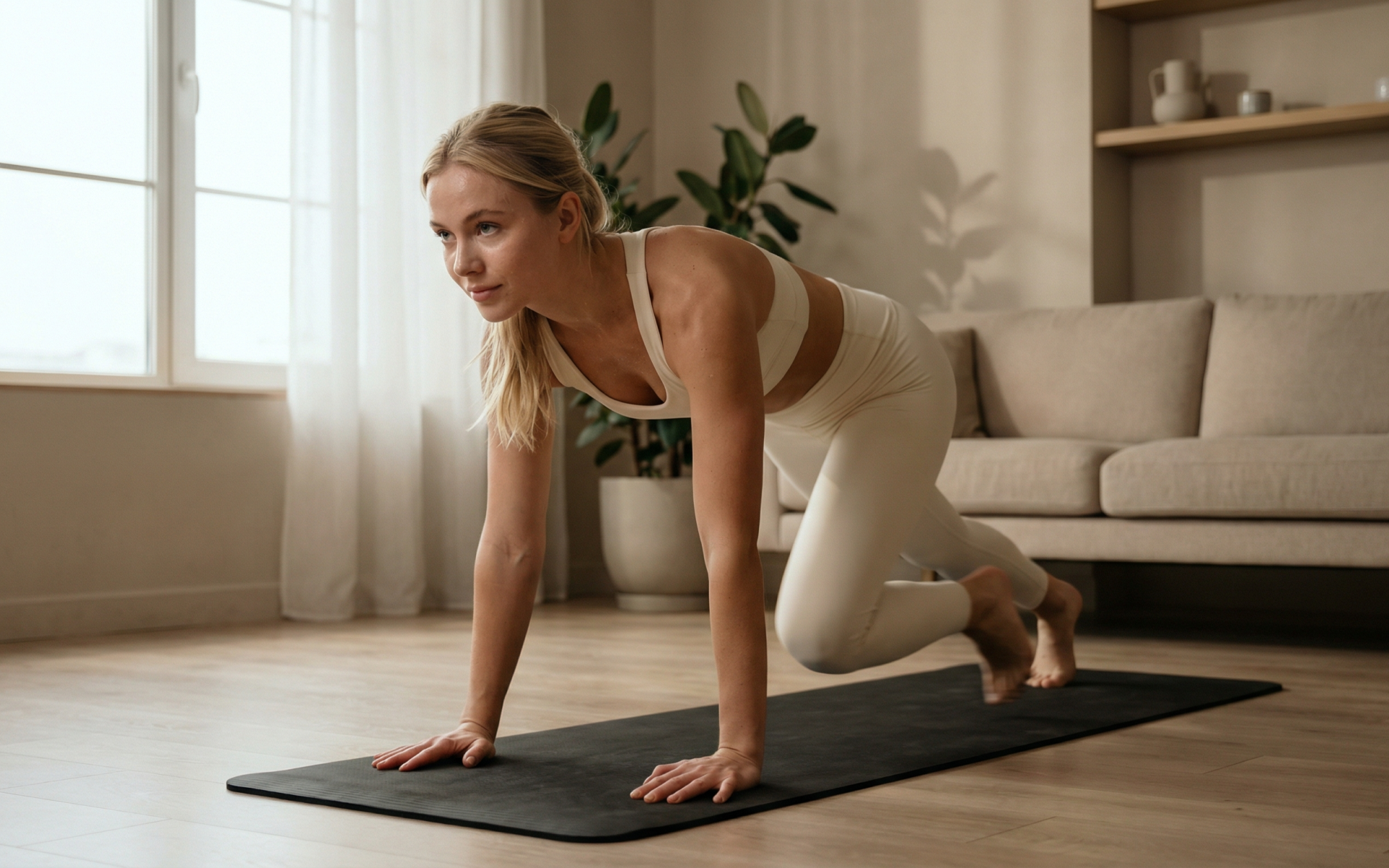Have you heard of a one-set workout plan?
This routine may seem too good to be true. Surely, to achieve your dream body composition goals, you’d need to do a little more than just one set.. right?
Let’s explore this in more detail and see what is possible.
Wouldn’t knowing the exact number of repetitions you needed to complete be cool?
That way, you can remove the guesswork, extra time, mental energy, and energy spent.
To make space for other essential aspects that tie into progress, too, such as your nutrition and eating habits. So, what exactly does one set to failure mean?
Continue reading below, and we will cover that, plus more.
What Is A 1 Set To Failure Workout Plan?
A one set to failure workout plan involves performing one working set of each exercise until you have reached muscular failure (1).
It is a maximum effort set of how many repetitions you can complete until you cannot complete anymore. This method has become popular with increasing research on the topic. We can understand the mechanisms of this workout and how it works through ongoing studies.
However, regarding training methods, some may be more effective than others.
Furthermore, when it comes to individual goals, those can vary quite widely, too.
However, this brings us to our next question: is one set to failure enough for muscle growth? It is an efficient training method.
But how practical is training to failure with only one set for building strength or muscle mass?
Can You Build Muscle With One Set?
Before answering whether you can build muscle with just one set, we should cover a few essential details. A term to become familiar with is muscle hypertrophy.
This term means the growth of muscle tissue (2).
When training for hypertrophy, some key principles are consistent across the research.
Researchers have referenced a specific range of repetitions (8-12 reps) as the hypertrophy zone (3). So, how does training one set to failure compare to eliciting hypertrophy gains?
As we have learned, training for muscular failure means performing repetitions until the muscles can no longer generate enough force to complete another repetition with proper form (4).
Experts say the one set to failure training method can stimulate muscle growth through a few mechanisms:
- Motor Unit Recruitment
- Metabolic Stress and Mechanical Tension
- Muscle Damage and Adaptation
Motor Unit Recruitment (5):
- As muscles fatigue, the body recruits higher-threshold motor units (fast-twitch fibers). These fibers have the most significant potential for growth.
- A single set performed to failure ensures maximum fiber recruitment, similar to multiple-set training.
Metabolic Stress and Mechanical Tension (2):
- Mechanical tension (force generated by muscle contraction) and metabolic stress contribute to muscular hypertrophy.
- Training to failure increases time under tension and metabolic buildup, which links to muscle growth.
Reasons why BetterMe is a safe bet: a wide range of calorie-blasting workouts, finger-licking recipes, 24/7 support, challenges that’ll keep you on your best game, and that just scratches the surface! Start using our app and watch the magic happen.
Muscle Damage and Adaptation:
- Training to failure causes small tears in your muscle fibers, which trigger repair and growth. But if you push too hard without enough rest, it can backfire and slow down your progress (6).
Now, in terms of building muscle effectively, a few more factors come into play (7).
- Adequate Recovery
- Adequate Nutrition
A key part of making progress in the gym is allowing your body to recover properly.
Suppose you’re training hard but not getting enough:
- Sleep
- Water
- Proper nutrition (including calories, macronutrients, and micronutrients)
If you’re lacking in these areas, it will be much harder to see results and eventually, no progress (7).
Read more: Lose 50 lbs In 6 Months: Explaining Why Setting A Healthy Weight Loss Pace Is A Success Half-Done
How Does 1 Set To Failure Compare To Multiple Sets?
Let’s look at following a ‘one set to failure’ training methodology compared to a traditional approach below.
Firstly, intensity and volume in muscle development are key parameters for effectiveness in training.
- Intensity: Refers to the weight or load used
- Volume: Refers to the total work completed via sets, reps, and weight.
While both are crucial for muscular hypertrophy and strength gains, they interact differently.
High Intensity (heavy weights, low volume)
- Lifting heavy loads (>80% 1RM) with low volume (1-3 sets) can still induce hypertrophy, if taken to failure (3)
- Maximizes mechanical tension but may not provide enough total workload for optimal muscle growth.
Moderate Intensity & High Volume (Traditional Approach)
- Typically 3-5 sets of 6-12 repetitions at ~65-80% 1RM. This amount is supposedly the ‘gold standard’ for hypertrophy (3)
- Provides enough stimulus per session and sufficient total volume for growth.
Single-Set Training vs. Multiple Sets
Research on Single-Set Workout Plan Training Effectiveness (8):
- Studies show that multiple sets are generally more effective for muscle growth (hypertrophy) in individuals with training experience.
- Multiple sets can lead to about 40% greater hypertrophy than one set to failure hypertrophy research results, although performing just one set can still produce meaningful muscle gains.
- In beginners, research observed similar muscle growth between one-set and three-set routines over a 10-week period. However, as lifters gain more experience, they benefit more from higher training volumes.
Another important consideration is asking if this training approach is going to be sustainable.
Take a moment to think about whether following a training program where, every single session, you go to failure, sounds quite taxing, and potentially, less enjoyable over time?
The gradual buildup of exhaustion and fatigue (both mentally and physically) could impact overall adherence to the workout program.
The program will be as good as the level of adherence to it; this applies to anything.
So, even if you’re following the best program in the world, it won’t be effective if you can’t maintain and consistently complete it well.
But let’s take a look at what the research has to say about it.
| Factor | 1 Set To Failure | Multiple Sets |
|---|---|---|
| Muscle Growth | Can be effective but may be slower | More effective long-term |
| Time Efficiency | Very time-efficient | Requires more time |
| Fatigue | High per set | Distributed over sets |
| Risk of Injury | Higher if form breaks down | Lower with controlled volume |
| Best for | Well-trained individuals | Bodybuilders, advanced lifters |
While multiple sets are generally better for muscle growth and total strength development, a 1 set to failure approach can still be effective if done consistently and with progressive overload.
How Effective Is Single-Set Training To Failure?
Single-set training to failure is effective for:
- Time-efficient workouts: An excellent option for people with busy schedules who still want meaningful results.
- Strength gains: Studies show that, when we maximize effort, single sets can produce strength improvements comparable to multiple sets, particularly in beginners and intermediates.
- Muscle endurance: Training to failure increases fatigue and time under tension, helping to boost muscular endurance. However, for advanced lifters aiming for continued hypertrophy and maximal strength development, multiple sets are typically needed for greater and more sustained progress.
Is Training 1 Set To Failure Everyday Effective?
Training one set to failure every day can work, with a smart plan:
- If you organize your week properly (different muscle groups, varied intensities, built-in recovery), it’s possible to make progress without overtraining.
- Daily training is similar to how advanced lifters structure their “body part splits” or “high-frequency training.”
What to Watch Out For
- Lack of recovery: Daily training to failure can cause cumulative fatigue and increase the risk of overtraining, especially if the same muscles/muscle groups are trained repeatedly without rest.
- Diminished returns: Many call it the law of diminishing returns, in strength training, referring to the fact that as you become more trained and stronger, the rate of progress naturally slows down (9).
- Not ideal for compound lifts: Going to failure frequently on heavy compound movements (like squats or deadlifts) significantly raises injury risk and can overload the nervous system.
To Make Training to Failure More Effective:
- Follow a split routine: Rotate muscle groups across the week so no area is overworked without rest.
- Include active recovery or mobility days: Light movement, stretching, or low-intensity cardio can promote recovery and reduce fatigue.
- Vary your intensity: Not every set needs to go to absolute failure; alternate between hard and moderate effort to give your nervous system a break.
- Focus on form over ego: Keep your technique solid. Lifting with good form beats lifting heavy with bad form every time, especially when going to failure.
Who Can Benefit From A 1 Set To Failure Routine?
Research suggests that single-set training to failure can be effective for a range of populations, particularly when time, recovery, or simplicity are priorities.
However, it may not be optimal for everyone. Here’s who might benefit most:
1. Busy Individuals
If you’re short on time, a 1 set to failure approach can offer solid returns with minimal time investment. High-effort, low-volume sessions have been shown to improve both strength and muscular endurance when performed consistently and taken to failure.
Why it works: It cuts down on gym time while still stimulating enough muscle tension to drive progress, making it easier to stay consistent with a training routine.
2. Older Adults Seeking Strength Maintenance
Resistance training allows older adults to slow or reverse age-related muscle loss (sarcopenia) (10).
Even low-volume, high-effort training, like one set to failure, can help older adults build or maintain strength and muscle mass.
Why it works: It offers a joint-friendly way to stimulate muscle without excessive wear and tear, making it a practical option for long-term health and independence.
You can keep reading more about this here: Gaining muscle after 50
3. Beginners Looking For Simplicity
For people new to lifting, simplicity is key. Single-set routines reduce the learning curve, allowing beginners to focus on mastering form, consistency, and habit-building.
Studies show that untrained individuals can make significant strength gains with just one set per exercise in the early stages of training (11, 12).
Why it works: Fewer sets mean less cognitive and physical fatigue, which can help build confidence, reduce dropout rates, and improve adherence.
Note: While a single-set approach can work well for newcomers, it’s still important that beginners spend time learning correct movement patterns and technique.
Starting with 2-3 sets of 8-12 reps for major exercises helps lay a solid foundation before introducing training to failure (11,13).
Read more: The Ultimate Beach Body Workout for Females: Exercises, Tips, and FAQs
What Exercises Are Best For This Training Method?
Compound exercises are especially effective for single-set training because they target multiple muscle groups at once, offering more bang for your buck.
You or a trainer may add isolation movements to address specific muscles or imbalances.
Upper Body
- Bench Press
- Overhead Shoulder Press
- Pull-Ups or Lat Pulldowns
- Barbell or Dumbbell Rows
- Bicep Curls
Lower Body
- Squats
- Deadlifts
- Leg Press (choose a good leg press weight based on your strength level)
- Lunges
- Calf Raises
Core
- Hanging Leg Raises
- Lying Leg Raises
- Ab Rollouts
- Plank (for time or max hold)
- Russian Twists
What Is A 1 Set To Failure Workout Plan?
Sample 1 Set To Failure Workout Plan (3 Days Per Week)
This 1 set to failure 3 times a week split allows for full-body coverage with sufficient recovery between sessions. Perform each exercise for one working set to failure after warming up.
Day 1 – Upper Body
- Bench Press
- Lat Pulldown or Pull-Up
- Db Overhead Press
- Bicep Curl
Day 2 – Lower Body
- Squat
- Deadlift
- Leg Press
- Calf Raise
Whether you’re a workout beast or just a beginner making your first foray into the world of fitness and dieting – BetterMe has a lot to offer to both newbies and experts! Install the app and experience the versatility first-hand!
Day 3 – Full Body
- Pull-Up or Inverted Row
- Dips or Push-Up
- Split Squats
- Hanging Leg Raise or knee raise
Tip: Alternate muscle groups to allow recovery on non-training days or if training more frequently.
Reminder: Always perform warm-up sets before your single working set.
Warming up properly:
- Prepares your nervous system
- Increases joint mobility
- Reduces injury risk (14).
Are There Risks Associated With Training To Failure?
While 1 set to failure can be effective for some, it comes with potential downsides:
- Injury Risk: Going to failure, especially on compound lifts, can cause form to break down, raising your injury risk.
- Fatigue: Training to failure every workout can cause fatigue to accumulate and increase the risk of overtraining, especially if you’re not sleeping well, eating enough, or taking rest days.
- Limited Volume: More volume (e.g., multiple sets) is typically more effective than just one set.
- Central Nervous System Fatigue: This style of training is taxing on your nervous system. Without proper fuel, recovery, and rest, burnout is more likely.
To reduce risk, avoid training to failure daily and prioritize recovery. You could explore micro workouts to mix up your workout routine.
They can be – for general fitness and variety. But for absolute strength and hypertrophy, repetition and progressive overload matter more. Therefore, following a well-structured program is key to achieving long-term gains and progression. It can save time, promote full muscle fiber recruitment, and can stimulate muscle growth effectively, especially for individuals who want to feel like they have gotten a decent workout session in an efficient training method. Absolute beginners are typically best starting with lighter weights and multiple sets to build proper form, endurance, and strength before progressing to failure-based training. The 3/2/1 rule typically refers to a structured warm-up or peaking strategy; 3 reps at light weight, 2 reps at moderate weight, and 1 rep at heavy weight – used to prepare for a top lift.Frequently Asked Questions
Are no repeat workouts effective?
What are the benefits of a 1 set to failure approach?
Can beginners start with a 1 set to failure plan?
What is the 3/2/1 rule in the gym?
The Bottom Line
A one-set-to-failure workout plan offers a time-efficient, straightforward, and evidence-supported method for building strength and muscle.
Especially for those with limited time, recovery capacity, or training experience.
Research shows that when taken to true failure, even a single high-effort set can produce meaningful gains in muscle mass and strength, particularly in beginners, older adults, and time-pressed individuals.
However, it’s not a one-size-fits-all solution. While this approach can support muscle hypertrophy, especially in the early stages of training, it may fall short for those aiming to maximize absolute strength, explosive power, or advanced physique development, which typically require higher training volumes and more nuanced progression strategies.
Ultimately, a one-set plan can be a great foundation or effective tool in a broader training program – but it works best when applied intentionally, periodically, and with attention to recovery, progression, and form.
DISCLAIMER:
This article is intended for general informational purposes only and does not serve to address individual circumstances. It is not a substitute for professional advice or help and should not be relied on for making any kind of decision-making. Any action taken as a direct or indirect result of the information in this article is entirely at your own risk and is your sole responsibility.
BetterMe, its content staff, and its medical advisors accept no responsibility for inaccuracies, errors, misstatements, inconsistencies, or omissions and specifically disclaim any liability, loss or risk, personal, professional or otherwise, which may be incurred as a consequence, directly or indirectly, of the use and/or application of any content.
You should always seek the advice of your physician or other qualified health provider with any questions you may have regarding a medical condition or your specific situation. Never disregard professional medical advice or delay seeking it because of BetterMe content. If you suspect or think you may have a medical emergency, call your doctor.
SOURCES:
- Effects of resistance training performed to repetition failure or non-failure on muscular strength and hypertrophy: A systematic review and meta-analysis (2021, nih.gov)
- Maximizing Muscle Hypertrophy: A Systematic Review of Advanced Resistance Training Techniques and Methods (2019, nih.gov)
- Loading Recommendations for Muscle Strength, Hypertrophy, and Local Endurance: A Re-Examination of the Repetition Continuum (2021, nih.gov)
- Neuromuscular Fatigue and Metabolic Stress during the 15 Minutes of Rest after Carrying Out a Bench Press Exercise Protocol (2022, nih.gov)
- Motor Unit Recruitment in EMG (2025, medscape.com)
- Pathophysiology of Exercise-Induced Muscle Damage and Its Structural, Functional, Metabolic, and Clinical Consequences (2020, nih.gov)
- The Sleep and Recovery Practices of Athletes (2021, nih.gov)
- Resistance Training Volume Enhances Muscle Hypertrophy but Not Strength in Trained Men (2019, nih.gov)
- Resistance Training Load Effects on Muscle Hypertrophy and Strength Gain: Systematic Review and Network Meta-analysis (2020, nih.gov)
- A Review on Aging, Sarcopenia, Falls, and Resistance Training in Community-Dwelling Older Adults (2022, nih.gov)
- No Time to Lift? Designing Time-Efficient Training Programs for Strength and Hypertrophy: A Narrative Review (2021,nih.gov)
- Dose-response of 1, 3, and 5 sets of resistance exercise on strength, local muscular endurance, and hypertrophy (2015, nih.gov)
- A Systematic Review of The Effects of Different Resistance Training Volumes on Muscle Hypertrophy (2021, nih.gov)
- Compatibility of Concurrent Aerobic and Strength Training for Skeletal Muscle Size and Function: An Updated Systematic Review and Meta-Analysis (2021, nih.gov)
